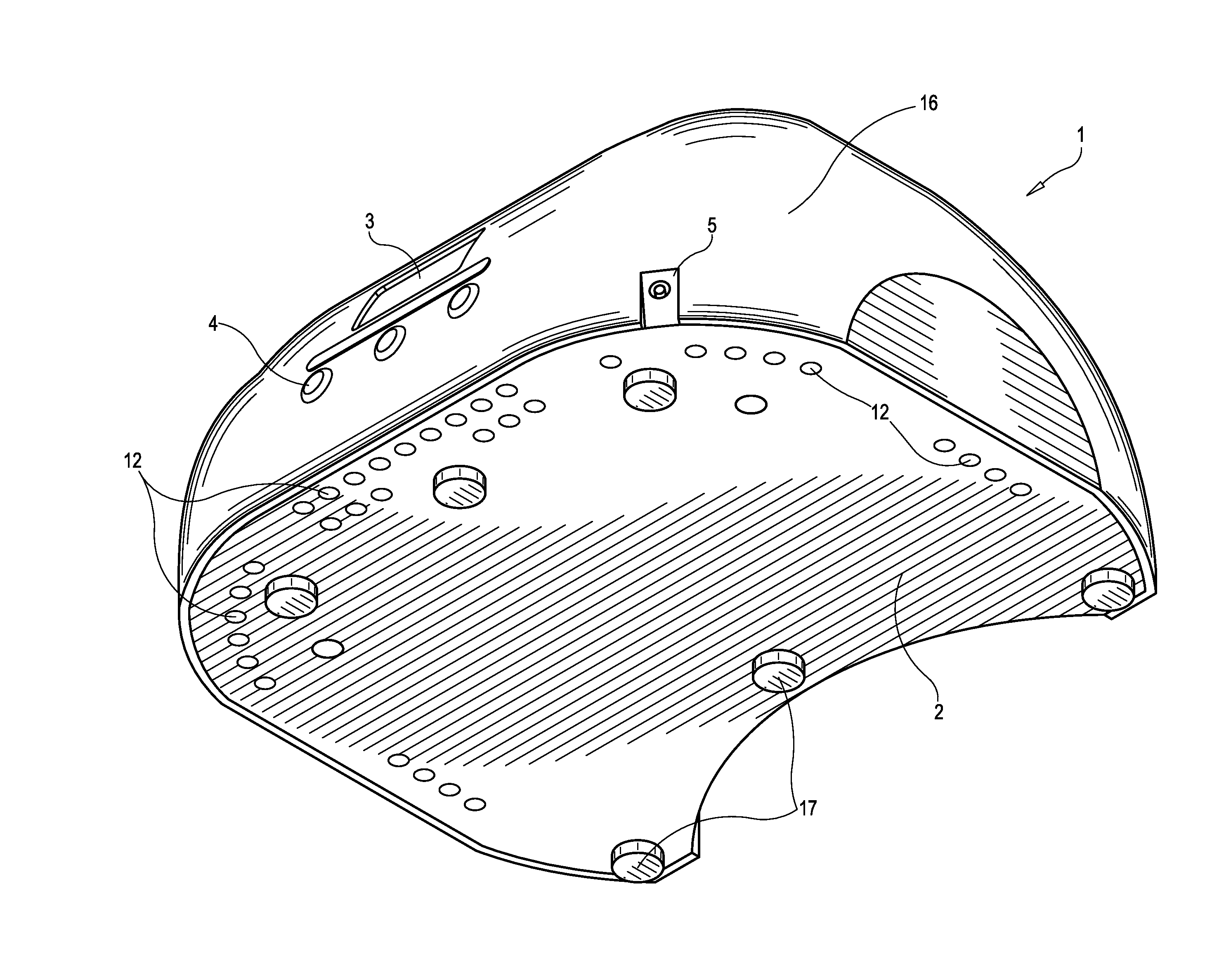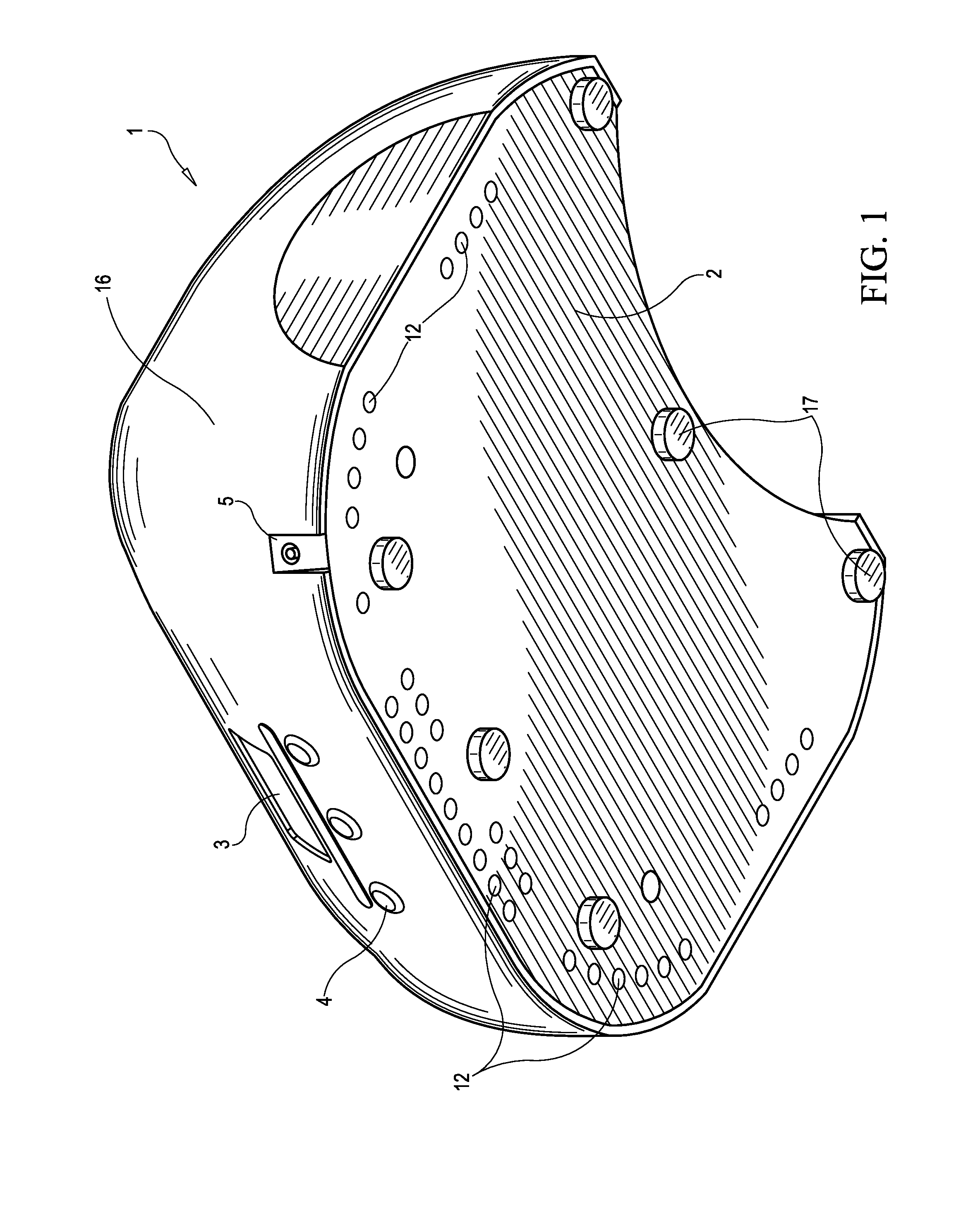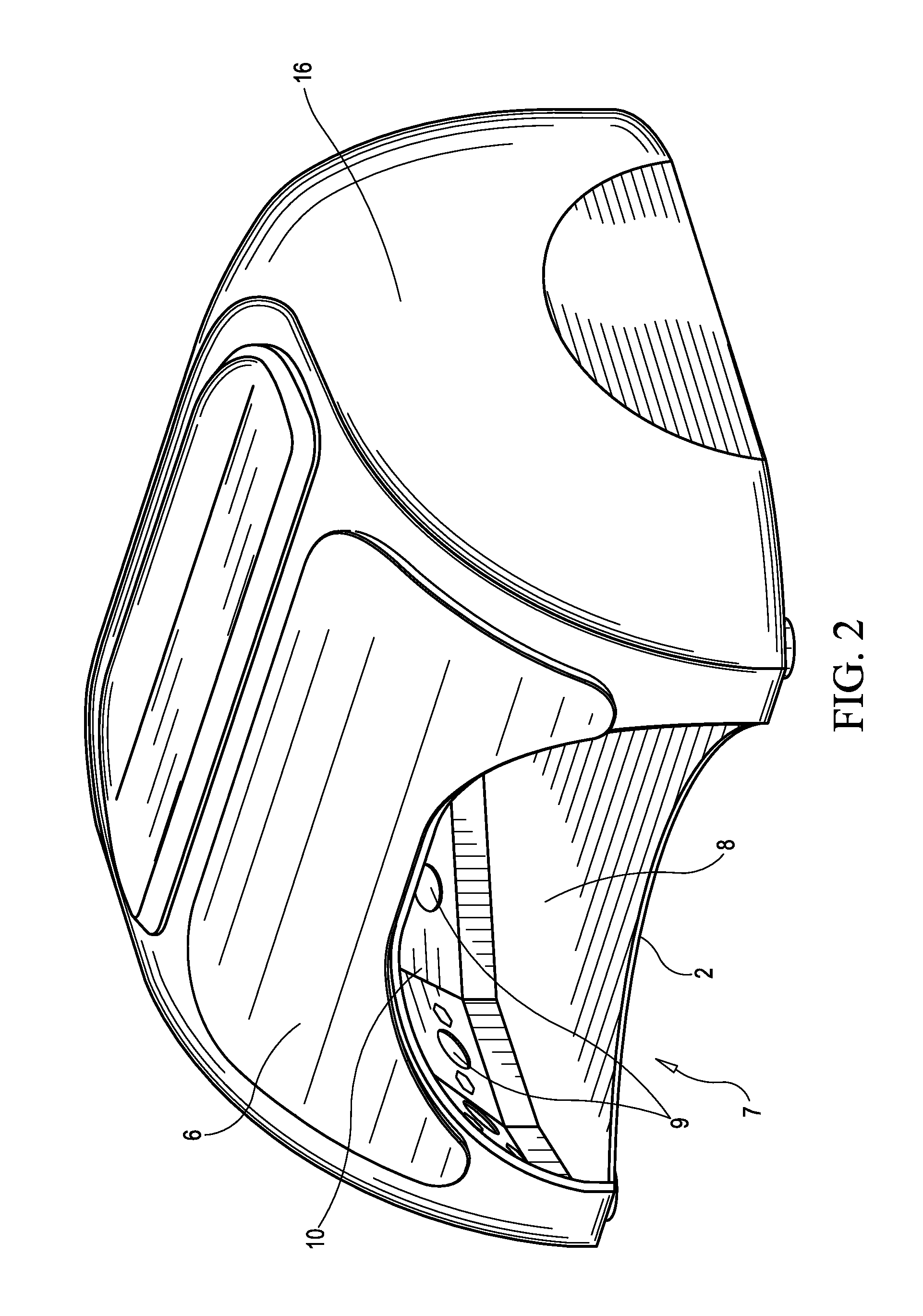[0020]In accordance with an embodiment, the subject matter disclosed herein is directed, in part, to novel devices for curing photo-curable nail gels that have been applied to a fingernail or toenail, and methods of their use. In particular, the subject matter herein disclosed is directed to fingernail (or toenail) gel curing devices having a substantially non-UV transmitting shield slidably attached thereto for reducing or otherwise substantially inhibiting the escape of UV light emitted by the LEDs from the devices to control or limit the level of extraneous secondary UV light to which a user is exposed, said secondary exposure occurring outside the confines of the fingernail gel curing or drying device. In certain embodiments, the device employs a plurality of LEDs substantially uniformly disposed about the top and sides of an inner chamber or dome to more uniformly distribute and utilize the ultraviolet light for curing of all five nails of a hand or foot in a relatively shorter period of time as compared to prior art devices. The plurality of LEDs may include any number of LEDs such as 5, 6, 7, 8, 9, 10, 11, 12, 13, 14, 15, 16, 17, 18, 19, 20, or more. The LEDs employed in the devices are selected on their ability to emit radiation within the ultraviolet-visible light range “UV-VIS spectrum” and to cure the photo-curable gel. The durability of LEDs minimizes the need to replace bulbs or radiation sources throughout the lifetime of the devices. The LEDs typically provide from about 2 to about 5 watts of power per LED, which permits facile curing while minimizing a user's overexposure to primary irradiation as well as reducing heat generation in the device, thus providing a level of comfort and safety for the consumer. Generally speaking, it is advantageous to elect a wattage of LED such that the total wattage number of LEDs times watts per LED is in the range of about 20 to about 40 watts, preferably from about 30 to about 36 watts, at least in part dependent on the device selected. The LEDs may employ reflectors to focus their light efficiently at the targeted nails. This can be carried out advantageously, for example, thorough the use of diamond or other faceted reflectors.
[0023]In other embodiments, the subject matter disclosed herein is directed, in part to a non-UV transmitting shield that may be attached to a fingernail or (toenail) gel curing device employing LEDs to cure the nail gel. The manner of the shield's attachment allows the shield to be repositioned by sliding from one position to another. The shield is attached in proximity to the opening to the irradiation chamber. In the full open position, the shield does not affect the size of the irradiation chamber opening. The shield may be slid in such a way as to reduce the size of the opening (i.e., a more closed position). The distance that the shield may travel in preparation for nail curing is only limited by the hand or foot placed in the curing nail gel curing device. In this manner, the shield may be employed to reduce the level of extraneous secondary UV light to which a user is exposed. As used herein the term “secondary UV light”, refers to any secondary UV exposure emitted by, but occurring outside the confines of, the fingernail gel curing device. The shield is typically placed on or near the outside surface of the device housing to which it is attached to maximize its secondary exposure shielding properties while minimizing any interference with any primary curing irradiation internal to the device. In an open position, the shield allows ready insertion of the hand or foot having gel coated nails into the irradiation chamber of the device to which the shield is attached and where curing takes place. After the hand or foot having freshly gelled nails is inserted into the gel curing device, the shield may be moved closer to the hand or foot by sliding it partially across the opening to reduce the size of the opening. When the shield is moved into a more closed position, the non-UV transmitting shield reduces the amount of extraneous secondary UV light to which a user is exposed, by reducing the size of the opening through which any UV light emitted within the device may escape the confines of the device, such as its irradiation chamber, for example.
[0024]The material of construction for the shield is not critical. Any solid material that may be readily shaped or molded into a shield, considered safe for contact by consumers, and that reduces or otherwise substantially inhibits the transmission of UV light emitted by the LEDs contained in the fingernail gel curing device may be used as a means of controlling the level of extraneous secondary UV light exposure occurring outside the confines of the device. The shield may be attached to a fingernail gel curing device in any number of ways so long as the shield may be opened or closed readily, and the manner of closure allows the shield's position to be adjusted to accommodate different hand or foot sizes. For example, the shield may be attached in a slidable fashion, preferably above the insertion point or opening of the hand or foot into the device, such that the shield may slide down to any extent necessary to contact the hand or foot of the consumer, to reduce the size of the opening and maximize protection against any extraneous secondary UV light exposure occurring outside the confines of a fingernail gel curing device.
[0026]It is another object of the present invention to provide a fingernail gel curing device which may be easily and efficiently manufactured and marketed.
[0027]It is another object of the present invention to provide a fingernail gel curing device which is of durable and reliable construction.
[0028]It is yet another object of the present invention to provide a fingernail gel curing device which is economically affordable and available for relevant market segment of the purchasing public.
 Login to View More
Login to View More 


